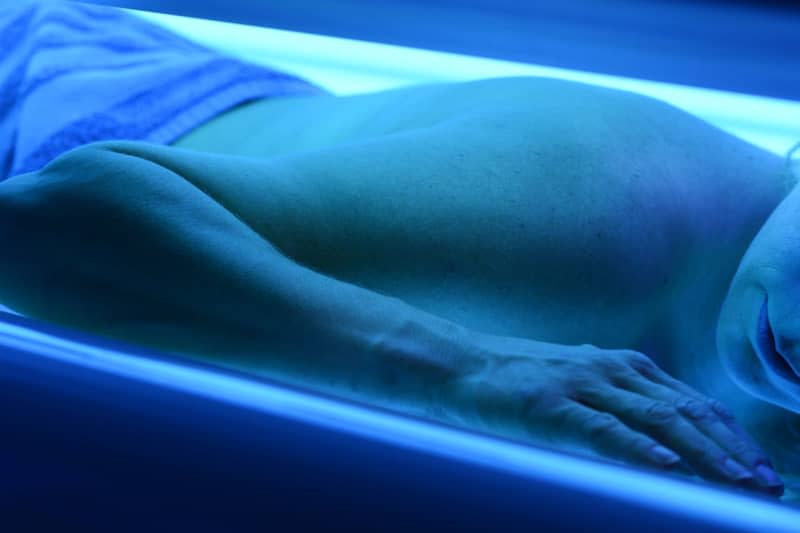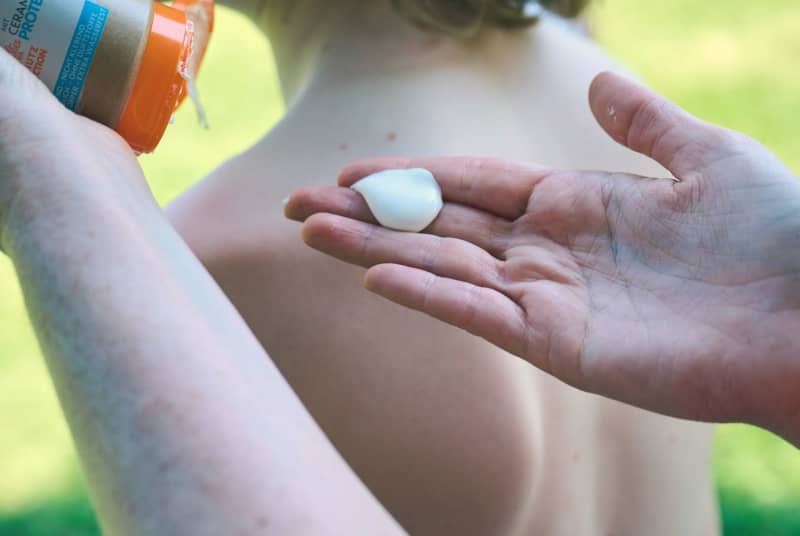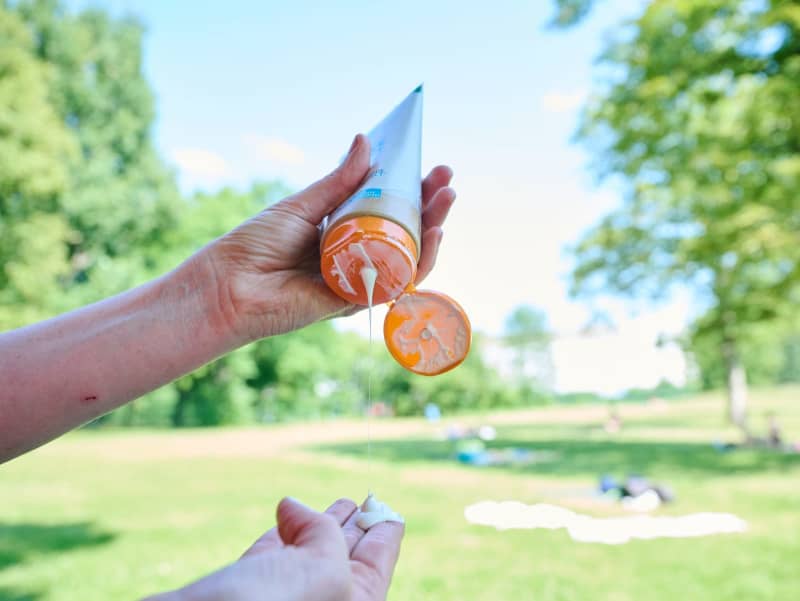Summer is upon us and the hot weather makes us want to enjoy the outdoors. As always, there’s a lot of misinformation being spread about sunscreen.
Does a higher Sun Protection Factor (SPF) protect your skin more effectively? Can a vegan diet protect your skin? Does reapplying sunscreen make it more effective? This fact check reveals the truth.
Reapply for longer lasting sun protection.
Certainly, to some extent
The German Office for Radiation Protection (BfS) recommends applying sunscreen 20-30 minutes before sun exposure. To maintain its effectiveness, it’s important to reapply it regularly: “Reapply at least every two hours, and especially after swimming and drying off.”
However, Munich-based dermatologist Christoph Liebig makes it clear that no matter how much you reapply, there is a limit to how much sun you can get.
“For example, if you use a sunscreen with SPF 10 and your natural protection time is 10 minutes, your total protection time is 100 minutes. After that, reapplying SPF 10 or SPF 50 will not provide any benefit,” Liebich explains.
Essentially, once your skin has absorbed enough radiation, your protection ends, but to maximize that time, you need to reapply sunscreen regularly.
Above all, it’s important to apply a generous amount of sunscreen in the first place: Radiation protection experts recommend 2 milligrams per square centimetre of skin, or the equivalent of four heaping tablespoons for an adult’s entire body.
For light sun protection, a day cream is sufficient.
In some cases, the truth
For a day cream to be effective at protecting you from the sun, it must contain ultraviolet (UV) filters. “Without them, there’s no sun protection,” says Environmental Health Protection Officer Kirsten Effers.
The SPF should be clearly stated on the packaging: “Without this information, consumers cannot judge the level of protection,” she says, and experts recommend choosing a day cream with a high SPF rating.
As with sunscreen, using a sufficient amount of day cream is also important, as dermatologist Liebig warns that some people view expensive creams as a luxury and don’t apply enough to their face.
“Even a high SPF won’t provide enough protection if you don’t apply the recommended amount,” Liebich explains. If you’re worried about using enough of your daytime cream, you’re better off opting for a traditional sunscreen.
“Pre-tanning” at a tanning salon can help protect your skin.
error
When you are exposed to the sun or a tanning bed, your skin is exposed to ultraviolet (UV) radiation, which is divided into three types: UVA, UVB, and UVC.
UVA radiation penetrates the dermis, UVB radiation only affects the epidermis, and UVC radiation is blocked by the ozone layer.
Liebig explains that tanning beds provide a “base tan” but offer no actual protection: Tanning bed light consists primarily of UVA rays, which cause a short-term, temporary tan, while UVB radiation is often blocked.
“UVB rays are needed to provide added protection, but they’re prohibited in tanning beds,” Liebich says.
Tanning in a tanning salon leads to additional radiation exposure, which is why tanning beds are prohibited for people under the age of 18. “Any additional radiation is harmful,” Liebig emphasizes.
A vegan diet can help prevent sunburn:
truth
While the idea of a vegan diet protecting you from the sun sounds appealing, experts say it’s not enough.
According to the German Pharmacists’ Association (Abda), vitamin A and beta-carotene found in health foods provide natural protection for the skin, but they are not enough to prevent sunburn, especially when the UV index is high.
Beta-carotene, abundant in fruits and vegetables, acts as a secondary plant pigment and contributes to the protection of the skin.
Eating these foods can offer some protection from the sun, says dermatologist Liebig, but adds that nutrition alone isn’t enough protection, and sunscreen should always be your primary defense.
The expiration dates for sunscreens are as follows:
truth
It is important not to use sunscreen for long periods of time, as it becomes less effective once it has expired. This reduced UV protection can lead to sunburn in the short term and an increased risk of skin cancer in the long term.
Manufacturers indicate how long they recommend you use the sunscreen after opening with a small symbol, such as “12M” (which stands for 12 months), and this symbol is usually printed on the packaging.
To keep track of shelf life, it’s helpful to note the date you opened the bottle. Additionally, sunscreens that contain octocrylene, which blocks UVB radiation, can develop benzophenone, a potentially carcinogenic compound, if stored for long periods of time.
Researchers in an American Chemical Society study found that sunscreens slowly produce benzophenones over time, even in unopened packs, highlighting the importance of replacing sunscreens annually to ensure safety and effectiveness.





